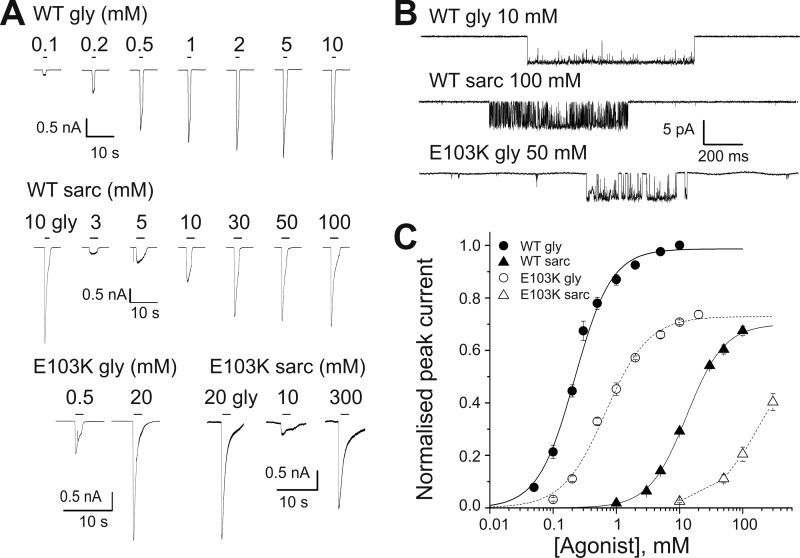FIGURE 2.
The E103K startle mutation reduces the sensitivity of α1 GlyR to both glycine and sarcosine and impairs channel gating. A, representative whole-cell current responses evoked by U-tube agonist application to HEK 293 cells expressing WT α1 GlyR (upper panels, 2 different cells) or E103K α1 GlyR (lower panel, 2 different cells). Black bars above the traces show the timing of the applications. Panels also show the responses to a saturating concentration of glycine obtained in the cells used for the sarcosine concentration-response curves. B, clusters of single channel activity elicited by saturating concentrations of glycine (upper panel) or sarcosine (middle panel) on WT α1 GlyR or (glycine only) on E103K GlyR (lower panel; cell-attached configuration, channel openings downwards). Note the decreased single channel Popen in mutant receptors. C, whole cell concentration-response curves to glycine and sarcosine in WT (n = 7 and 10, respectively) and E103K α1 GlyR (n = 4 and 3, respectively). Curves are scaled to the maximum single channel Popen measured at saturating glycine or sarcosine; for sarcosine on E103K GlyR, we could not measure the maximum single channel Popen and the curve is scaled indirectly (e.g. responses to sarcosine are scaled to the macroscopic maximum response to glycine in the same cell, and then scaled to the maximum glycine single channel Popen).

